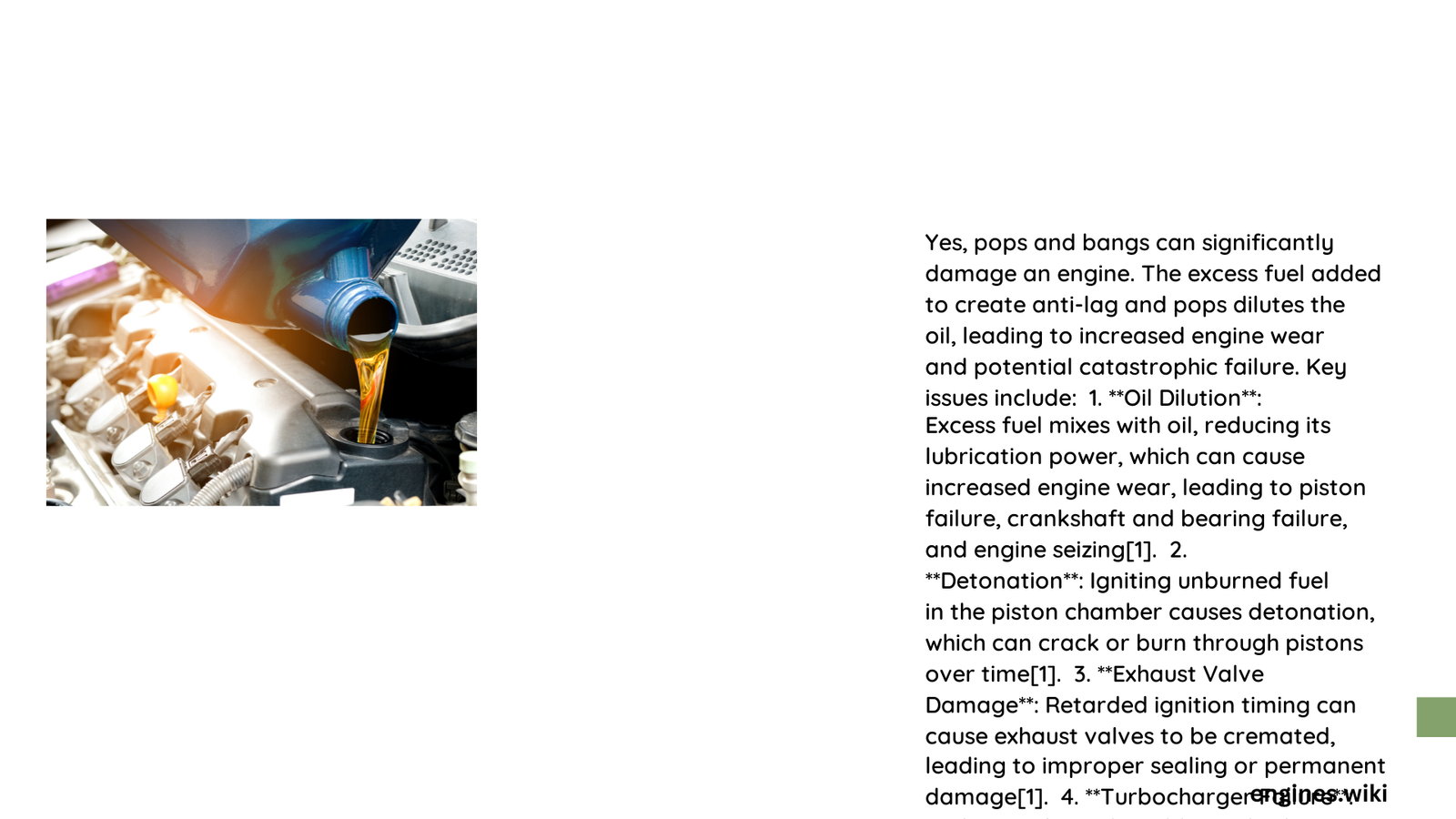Automotive enthusiasts often debate the potential consequences of exhaust pops and bangs on engine health. These dramatic sound effects, popular in performance tuning, can potentially cause significant mechanical stress and thermal damage to critical engine components. Understanding the intricate balance between acoustic excitement and potential mechanical wear is crucial for responsible vehicle modification and long-term engine preservation.
What Causes Exhaust Pops and Bangs?
Exhaust pops and bangs result from deliberate manipulation of the engine’s combustion cycle, primarily through:
- Ignition Timing Retardation: Delaying spark timing to create unburned fuel combustion in the exhaust system
- Fuel Enrichment: Introducing additional fuel during deceleration phases
- Electronic Control Unit (ECU) Modifications: Reprogramming engine management systems
Can Pops and Bangs Damage Engine Components?

Thermal Stress Mechanisms
Pops and bangs generate extreme thermal conditions that can compromise multiple engine systems:
| Component | Potential Damage | Risk Level |
|---|---|---|
| Catalytic Converter | Rapid deterioration | High |
| Exhaust Valves | Structural weakening | Medium |
| Turbocharger | Accelerated wear | High |
| Exhaust Manifold | Thermal cracking | Medium |
Mechanical Stress Factors
The mechanical implications of repeated pops and bangs include:
- Increased Exhaust Gas Temperatures (EGTs)
- Premature Component Wear
- Potential Structural Integrity Reduction
How Severe Are the Potential Risks?
Turbocharged vs. Naturally Aspirated Engines
Turbocharged Engines:
– More susceptible to damage
– Higher thermal sensitivity
– Greater risk of turbocharger degradation
Naturally Aspirated Engines:
– Lower immediate risk
– Less complex thermal dynamics
– More resilient to minor modifications
Recommended Mitigation Strategies
To minimize potential engine damage while maintaining performance characteristics:
- Limit ignition retardation to less than 25 degrees
- Monitor exhaust gas temperatures
- Use professional tuning services
- Implement conservative fuel management
- Regular maintenance and inspection
Technical Considerations for Safe Implementation
Enthusiasts seeking pops and bangs should consider:
- Professional ECU calibration
- High-quality exhaust components
- Temperature monitoring systems
- Periodic comprehensive engine diagnostics
Long-Term Performance Implications
While immediate catastrophic failure is unlikely, cumulative stress from repeated pops and bangs can:
- Reduce overall engine longevity
- Compromise emission system integrity
- Potentially invalidate manufacturer warranties
Expert Recommendations
Automotive engineers universally recommend:
– Moderation in modification
– Professional installation
– Comprehensive understanding of mechanical limitations
Conclusion
Pops and bangs represent a complex interaction between acoustic desire and mechanical engineering. Responsible implementation, professional guidance, and understanding potential risks are paramount for enthusiasts seeking this performance characteristic.
